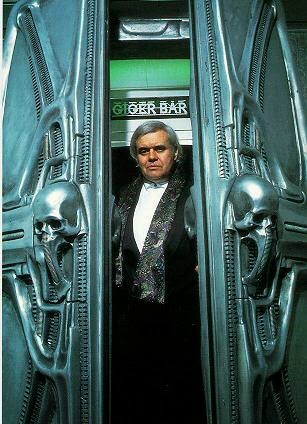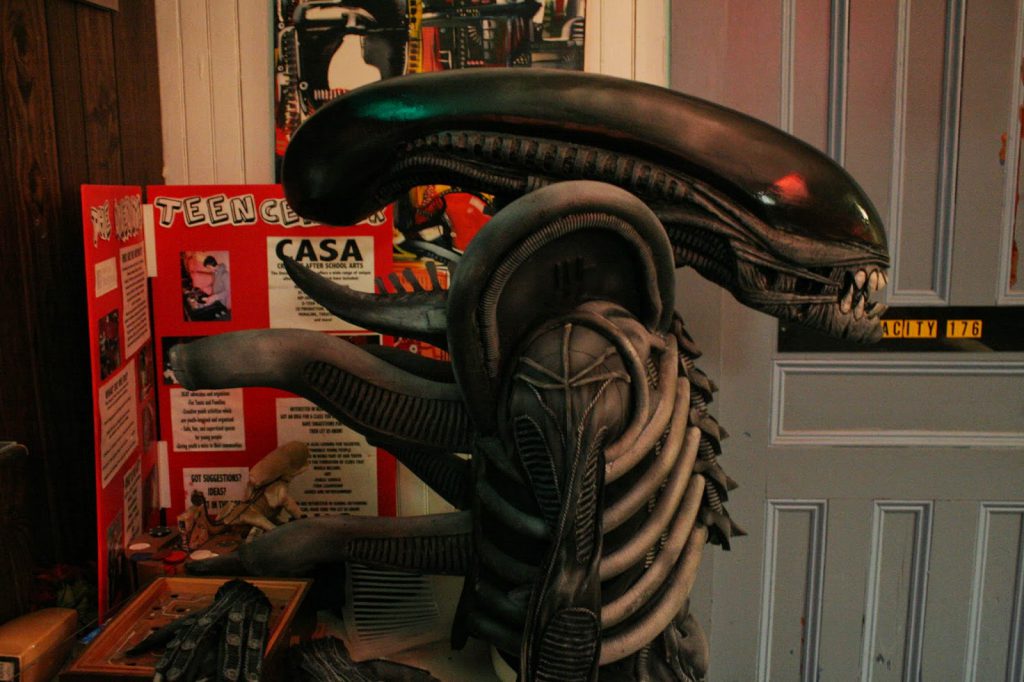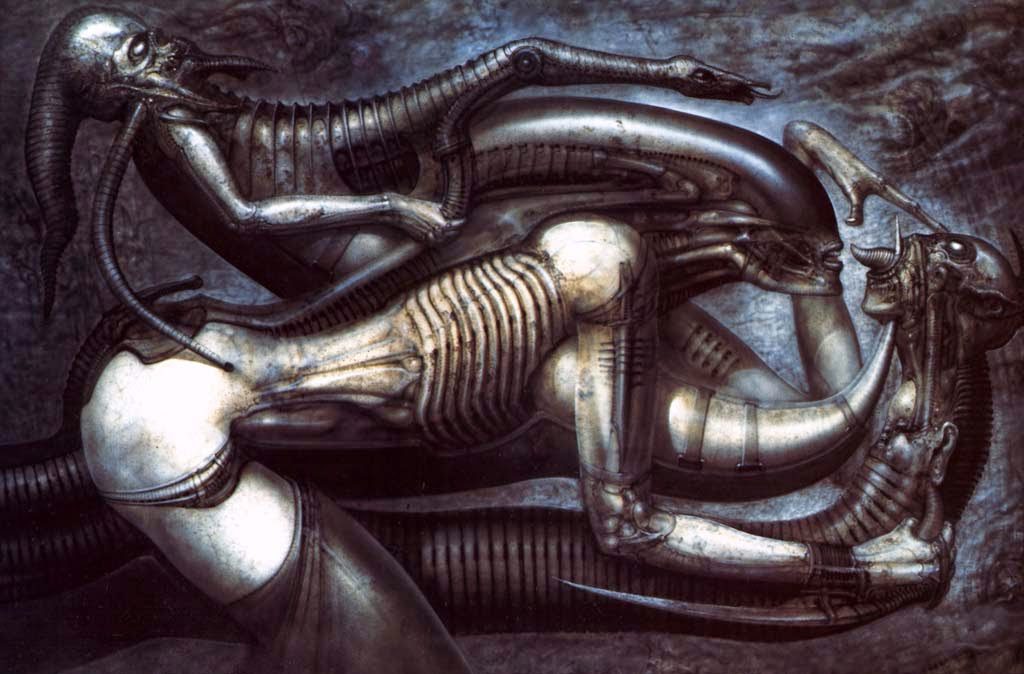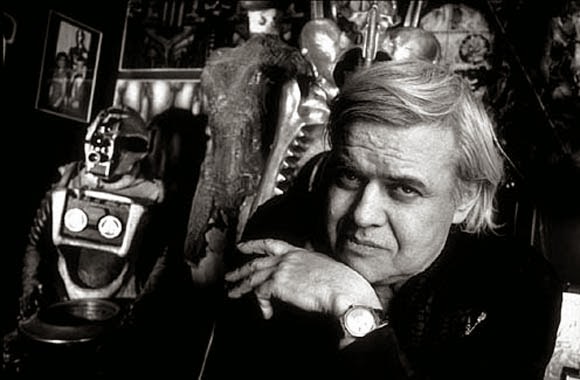This month, the talented and underappreciated (by his peers), Hans Ruedi Giger passed away following injuries from an accident.
His work as we know from the likes of the Alien movies, his designs for Dune and so on, was almost always commercially successful.
But often, it was shrugged off by critics as “morbid kitsch” and could only really be found in Alien themed bars rather than being featured in any acclaimed art galleries.
But undeniably Giger was a surreal and macabre creative genius and was skilled in most mediums, his favourites being metalwork, Styrofoam and plastics.
His earlier materials are mostly paintings in deep, rich black inks and oil, which are available as collections in huge glorious coffee table style books or large prints that can be found on his webstore for the avid fan looking to pay homage to their recently deceased artistic hero.
His first collection was named Ein Fressen fuer den Psychiater, meaning “A Feast for the Psychiatrist” which is rather apt considering it’s cryptic political cartoon style, loaded with double entendres and depictions of unknown creatures or bizarre combinations of disembodied limbs protruding from sinister machinery.
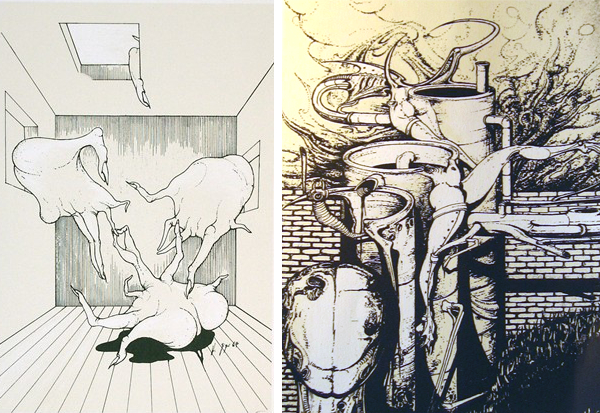 |
| From Ein Fressen fuer den Psychiater |
One of these actually looks as though it could be an early sketch for the ‘facehugger,’ and it’s also discernible that Giger’s “biomechanical” themes were clearly established early on in his artistic career.
When Giger started creating images like this back in the ‘60’s, people found him a little shocking. Which is understandable, seeing as he lived in a small rural town in South-Eastern Switzerland. The community there just wasn’t ready for his unusual fixation on mortality, the sexual and the saturnine. It was said that one of his earliest exhibitions, close to his home town, had such a bad reception that the owner of the building it was held in had to clean spit from it’s windows every morning from disgusted passers by.
But any publicity is good publicity, and spitty window making only leads me to enjoy the story of Giger’s career even more.
Despite his obsession with sex and death, and the disappointment of the locals, Giger’s mother Melli stood by him and encouraged his creativity. A combination of his mother’s constant support and his father’s desire for him to become an industrial designer is probably what roused his particular penchant for mechanical themes.
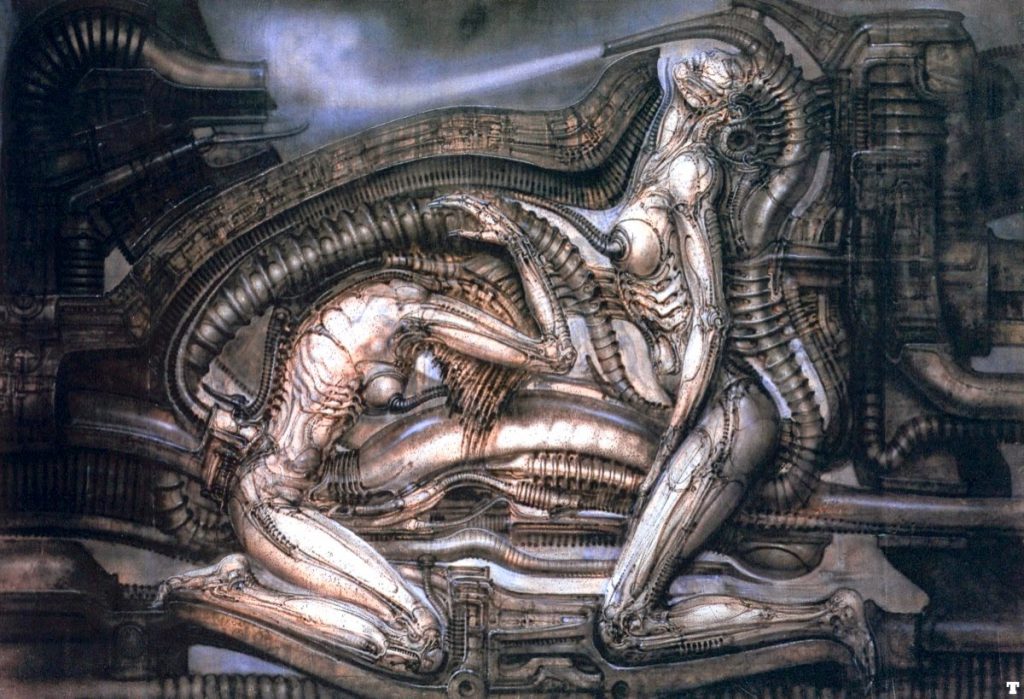 |
| Sexy, scary machines. No one did it better. |
As Sci-Fi fans, most of us are probably most familiar with his work from its adaptations in the Alien movies. The xenomorph creature is particularly iconic, despite making appearances in slightly differing shapes. Because of the type of parasitic life form the xenomorph or ‘Alien’ is, (whether created by the superior God-like Engineers, or independently evolved – it’s still unclear, even after Alien Vs Predator and Prometheus) the shape of the creature is partially dependant on the initial host.
Each one starts life as a large ‘egg’, that hatches when a potential host comes close. From the egg comes the facehugger, which looks something like a mechanical spider or a giant bony hand with gross, sticky sexual parts protruding from its palm. It would be hard to tell whether, at this point, the organism is male or female. As it’s ‘organ’ is both phallic and intrusive, and yonic and life-giving. It is discovered in Aliens of course, that there is a queen responsible for laying all the egss, which pretty much resolves the gender issue; but crazy Giger loved the sexual ambiguity and having a reason to draw both cocks AND vaginas.
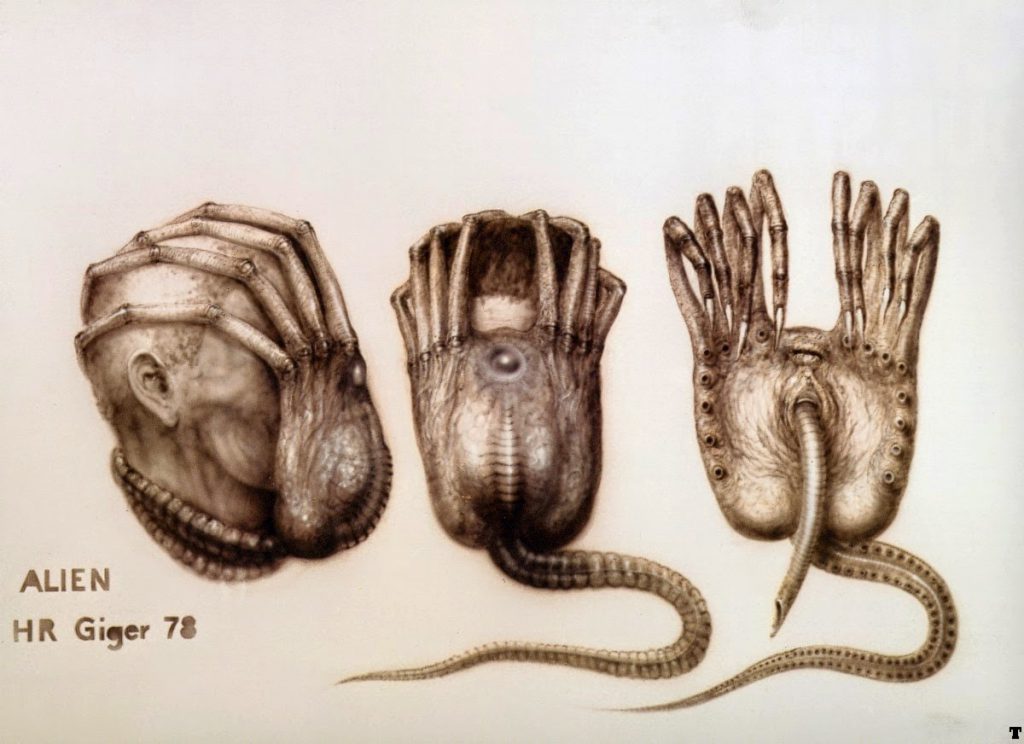 |
| Gross. |
Once the facehugger has attached its self to the host, it forces its self down through the mouth, wraps it’s tail around the hosts neck and holds it still, breathing but paralysed. It’s important that the facehugger remains attached for infestation, this is why the facehugger will strangle the host if it you’re man enough to try and remove one. Whilst attached, it lays the xenomorph embryo in the victim’s throat, and then scuttles off and dies leaving you with a false sense of security and triumph. The second part of the life cycle begins after a short gestation period, which culminates in the infant xenomorph in its worm-like state bursting through the chest and killing the host.
 |
| Here we can see the “birthing” process demonstrated, featuring a plush chestburster. Cute! |
This ‘worm’ develops very quickly into the adult xenomorph, which has recognisable features such as a long flexible tail made up of what looks like vertebrae, an exoskeleton, a blind and elongated head with a jaw full of teeth hiding a second and retractable mouth. These qualities can be transferred to different body shapes, depending on species of the host.
In Alien and Aliens, it’s body shape is most similar to that of a human due to the facehuggers impregnating human hosts. In Alien³, it is demonstrated that dogs for example can also be used as hosts and that the resulting spawn takes on a canine body structure, quadrupedal movement and enhanced speed. Therefore we can assume that other interspecies variations would have all the above listed xenomorph characteristics, but would also take on any beneficial genetic differences the host may have to offer.
 |
| Giger with one of his sculptures at the Giger Museum in Chur, Switzerland. This one is actually a canine xenomorph. |
With all of these variations of one “character” alone, the Alien films are ripe for cosplay interpretation. Cosplaying as a xenomorph doesn’t necessarily mean you would have to construct a huge stretched out head with a telescopic mouth. That is definitely an option, and an impressive one, but there are plenty of other ways of portraying the same theme.
Wearing some kind of facehugger would be a great idea for a party kind of environment where you might not want a costume to inhibit movement too much. It may inhibit your sight and eating/drinking however which would be something to consider. Or like the cosplayer pictured above, you could cosplay Kane mid chest-burst and simply have the phallic and bloodied infant alien emerging from your chest. If you wanted to open up the cosplay to the whole family, you could include the dog with the canine version of the xenomorph! (The full family line up should obviously include Ripley and Newt.)
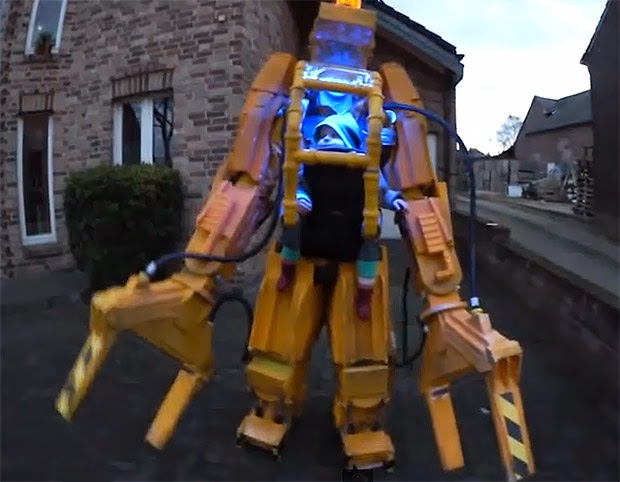 |
| I hope that baby can drive that loader. I wonder if it has a Class Two rating? Make your own HERE |
Making a full adult xenomorph that looks really awesome would depend on your attention to detail. Making it might be labour intensive but shouldn’t be too difficult, but the real test is the small artistic detail; which you could probably nail if you research enough of Giger’s work to get a feel for his style.
The best blog I could find on making your own costume was HERE.
Or for a more simplified version (for Halloween parties and things) check this one out instead.
To complete the look, you could really use some polish and maybe something that would look like the creature’s saliva to smear all over the jaw of the costume. Like I said, the attention to detail is what makes it.
There are of course many other cosplayable characters in the Alien series, none quite as impressive as the alien itself, but great fun none the less. Because of the time the movies were made, any of the marines or Ripley could only be pulled off correctly if completed with a terrible late 1970s, early 1980’s haircut.
This is probably the most essential part of any of those costumes. If you’re looking for similar costumes with better hair, try Prometheus.
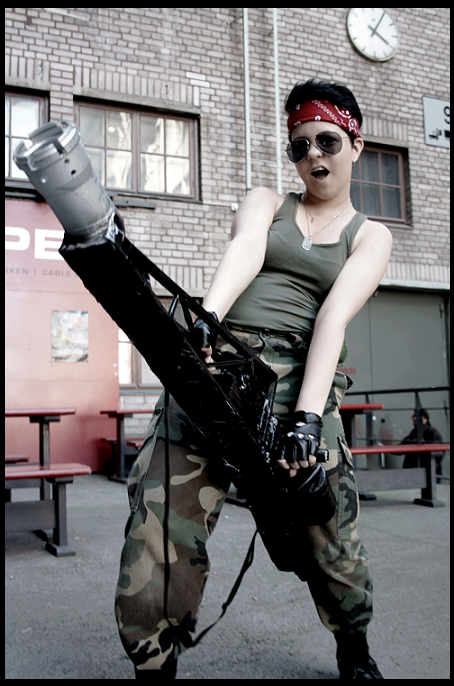 |
| “Hey Vasquez! You ever been mistaken for a man?” “No, have you?” |
Visually speaking, Giger’s influence is the best thing about the Alien movies, and I myself recently re-watched a couple of them in memoriam.
Seeing them again has rekindled my love for his style and spawned a desire in my chest (hopefully not of the gooey alien explosion variety) to visit his museum in Switzerland. The world has lost a truly great artist and I think it’s important we reacquaint ourselves with his work to remember what an important influence his biomechanical art has had on science fiction, and in turn our geeky sci-fi-centric lives.
Thank you for everything you’ve done Mr. Giger, we will continue to enjoy your dark, industrial legacy for generations to come.
Our planet is sorry to lose you, but perhaps you were never really on it anyway.



































































































